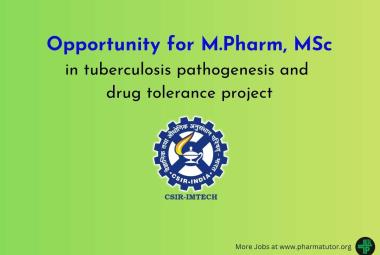 ABOUT AUTHOR:
ABOUT AUTHOR:
Vinay Kumar Singh
General Manager-Technical,
Mikasa Cosmetics Limited,
Ahmedabad, Gujarat
vinay.s@mikasacosmetics.com
Before refrigerators, Korea developed fermentation techniques that enable food to be stored safely for long periods. Many traditional medicines and cosmetics used by women at the royal court used similar knowhow. With interest growing in traditions of the past, there are now more cosmetics made using old techniques.
The latest trend in Cosmetics particularly Skin Care is fermented beauty products. This concept, originated in Korea, basically involves fermentation of natural ingredients like black tea, ginseng, seaweed, bamboo sap extract, red clove flower, hibiscus, snow lotus and various herbs and flowers.
[adsense:336x280:8701650588]
Fermented Cosmetics are Cosmetics that use natural ingredients that have been fermented. Now, many of you may think that fermented ingredients are only for food, but in Korea, fermented rice/beans/corn/etc are one of the Korean skin care products. These do not have negative side effects, but instead it keeps skin healthy, strong, and smooth. Since fermented cosmetics use fermented natural ingredients, it is beneficial to all skin types including the sensitive ones.
Fermentationis the process in which a substance breaks down into a simpler substance. Microorganisms like yeast and bacteria usually play a role in the fermentation process, creating beer, wine, bread, kimchi, yogurt and other foods. It is the process in which microbes decompose organic compounds with enzymes in them. Organic compounds are the materials that produces energy to our body.
The word “fermentation” was originated from a Latin word “fervere” which means “boil”, because bubbles may have been observed when alcohol was fermented to produce carbonic acid gas.
Human beings take organic compounds such as carbohydrates, deriving energy from oxidation of organic compounds which turn into carbon dioxide and water. However, microbes do anaerobic respiration, so they cannot fully decompose organic compounds. Instead, they produce different kinds of organic compounds that have less amount of energy. In the process of fermentation, organic compounds are decomposed to produce different kinds of organic compounds and provide small amount of energy to microbes.
[adsense:468x15:2204050025]
Fermentation requires ferment bacteria such as enzyme and bacillus. Such bacteria decompose nutritional matters in anaerobic environment to produce other matters which are byproducts as a result of imperfect decomposition.
The microbes decompose organic compounds that lay different characteristics are the two same processes. However, fermentation is different from decomposition. Fermented food has good flavor, edible taste and nutrition, while decomposition cannot be eaten due to bad smell and can cause a food poisoning. Of course, the two processes seem similar, but their differences are as follows:
First, the by products are different. The byproduct of decomposing cannot be eaten, while the byproduct of fermentation can be used as food.
Second, the processes are different. Putrefactive bacteria and ferment bacteria are of different kind. The activities of putrefactive bacteria produce bad smell due to amine and hydrogen sulfide. Putrefactive bacteria come to exist without exception when organic compounds are put in natural environment.
However, fermentation is generally triggered in specific conditions and environment. For example, Chinese cabbage would spoil with no special treatment, but it does not decay with salt treatment. Salt prevents putrefactive bacteria from activating and helps ferment bacteria to get stimulated. When salt-treated cabbage is stored in an appropriate container with the right temperature, ferment bacteria turns it into kimchi.
As such, specific conditions and environment are the main cause of fermentation . Another example can be found in the case of milk. Milk spoils with disgusting smell in normal temperature due to the activity of putrefactive bacteria. However, milk can be fermented to become cheese when it is placed with specific enzymes in certain conditions. The cheese-making process causes some kind of smell which is different from the smell of amine and hydrogen sulfide.
Fermented foods are known to be good for health. Korean foods such as kimchi have become famous in the world because of their health benefits. Many studies have proved that small molecules, the outcomes of fermentation, are beneficial for physiological function of our body.
Lactic acid bacteria and lactobacillus, contained in kimchi, stay in intestines of human body, functioning as gatekeepers. Naturally-fermented kimchi is effective in preventing food poisoning bacteria (Salmonella, Staphlococcus, Vibrio, and pathogenic coliform bacillus) from growing.
The one that launched and made fermentation skincare a household name was none other than Japan’s SK-II. The story of SK-II began at a sake brewery in Japan, where scientists noticed that elderly workers had wrinkled faces, but extraordinarily soft and youthful-looking hands. These hands were in constant contact with the sake fermentation process.
Five years of research, and the careful examination of over 300 types of yeast led to the discovery of Pitera, an ingredient that would become the keystone of the SK-II line, born in the 1980’s. In fact, the signature Facial Treatment Essence is 90% Pitera. A by-product of yeast fermentation, Pitera is a blend of vitamins, amino acids, minerals, and organic acids that protects, rejuvenates, and renews the skin. The Facial Treatment Essence is known to Asians as ‘The Holy Water’ or ‘The Miracle Water’.
There have been studies done by Charmzone Cosmetics about the Mechanism of Melanogenesis Inhibition by Melanoston Isolated from Yeast, Inhibitory and Eliminating Effects of Yeast-extracted Melanoston on Pigmentation and Preexisting Pigmentation.
Another notable South-Korean fermentation brand from South Korea is Su:m37 by LG. Believing in “fermentation cosmetics” as the next growth engine in the industry, LG H&H launched su:m 37, Korea’s first naturally fermented cosmetics brand. As Amore Pacific introduced Chinese medicine skincare to the market, LG aims to create a niche for naturally fermented skincare products. As is recognized, during fermentation microorganisms double active substances and break down molecular structure of substances to a size that is able to penetrate the skin more deeply and rapidly to boost the skin’s natural defense. Fermentation attracts attention for its powerful ability to break down toxic substances.
In particular, su:m 37 differs from artificially fermented cosmetics already on the market in that it offers pure, naturally fermented products. About 50 plant species grown organically in Hokkaido, a pristine area of Japan, are naturally fermented at a temperature of 37°C for 1102 days, or “3 years + 7 days.” Su:m 37 is created using a fermentation technique studied for about eight decades by Japan’s Otaka Research Center, renowned for its research in fermentation. In the first step of this process, undiluted solutions of some 50 clean and pure plants are extracted and stored in a Japanese cedar keg in the Research Center for seven days.
The extracted solution is moved to a storage area with a constant temperature of 37°C. It is left to breathe in tune with the melody of a music box while it is fermented dozens of times over three years. The process also produces new substances Zyen and Zyen-γ, which are highly effective at improving the skin. Zyen and Zyen-γ, naturally fermented substances, contain various amino acids, natural organic acids and antioxidants. They do not irritate the skin and stimulate the skin’s metabolism. They help the skin appear healthy and smooth.
LG H&H believes that fermentation technology will be a new growth engine that can reinvigorate a Korean cosmetic market already saturated with Oriental medicine-based cosmetics. Sales has been very encouraging and Su:m37 was a huge success in South Korea.
Amore Pacific then released their fermentation based skincare, Hyosia, in 2010 after the success of LG’s Su:m37. Hyosiah is a fermentation skincare brand based of the fermentation of soybeans.
AMOREPACIFIC has focused on the skin effects of soybeans since the 1980s, discovering a rare isoflavone called ‘CureBEAN™’ from fermented soybeans through 25 years of research. A rare isoflavone, CureBEAN™ has a powerful antioxidising function, and is effective at removing toxins from the skin and normalizing the skin’s regeneration mechanism. Because of this, in August 2010, AMOREPACIFIC released a fermentation science cosmetic product called ‘Hyosiah’ comprising the relevant ingredients.
There are many Japanese and Korean Fermentation Brands as below.
Japanese Fermentation Brands: Dr. Ohhira's Probiotic Magoroku Skin Care, SK-II, Ozeki Sake Rice Skin Care, KURAHITO Skin White, Rice Beauty, Hakutsuru Rice Beauty
Korean Fermentation Brands: LG’s Su:m 37, Amore Pacific’s Hyosiah, Miev, Skinfood’s Daal Story, Sooryehan’s Hyo line, Saimdang
Draco has made high purity bioactive compounds such as fermented glycerin, and with easy modification it is possible to make other substrates such as organic acids, flavor or perfume compounds, and even colors through the power of living yeast or bacteria cell cultures.
Organic acids are increased in many fermented foods providing a sour and flavorful note in the right balance with other constituents. Organic acids such as malic acid, fumaric acid, citric acid, and others are also well known Krebs cycle intermediates that help provide quick energy substrates to the energy producing mitochondria of the cells. They are known to chelate (bond with) essential minerals such as calcium, magnesium, zinc, copper and many others to thereby much improve bioavailability and decrease toxicity.
In seaweeds there is increased bioavailability of minerals through fermentation, and since seaweed is a wealth of mineral elements from the sea, accounting for up to 36% of its dry mass this can supply an amazing natural mineral supplement. The mineral macronutrients in kelp include sodium, calcium, magnesium, potassium, chlorine, sulfur and phosphorus; while the micronutrients include iodine, iron, zinc, copper, selenium, molybdenum, fluoride, manganese, boron, nickel and cobalt. Fermenting seaweed releases minerals from cell walls and makes them more soluble and easily absorbed.
For gastrointestinal health it is a source of prebiotics to promote the growth of healthy bacteria and promote regularity. Bioactives in fermented kelp include fucoidan, beta glucans, laminarin, short chain fatty acids, and shorter chain polysaccharides. For skin health fermented sea kelp has soothing, hydratinganti-inflammatory effects.
With so much evidence that fermented foods and the enzymes they contain are essential for a healthier body, we knew it was only a matter of time before beauty companies harnessed those ingredients for healthier skin. Fermented cosmetics are currently all the rage in Korea.
Koreans eat fermented foods like kimchi in order to improve health and beauty from the inside out, and they love that the same natural ingredients are now in their topical creams. Many celebrities credit fermented skin care with giving them a bright and youthful complexion.”
This category of skin care is so popular that in the past few years, Korean conglomerate LG Household & Health Care has launched not one but two lines; SU:M37 and Sooryehan Hyo; completely dedicated to fermented products.
The most common ingredients in skin care that undergo fermentation are fruits, plants, herbs, and yeast. The process breaks down the molecular structure of the ingredients and actually makes the nutrients more concentrated and more easily and rapidly absorbed. It can also produce additional skin-loving amino acids and antioxidants. Korean brand Sulwhasoo, incorporates fermented white and red ginseng into many of its products. While the intestines produce enzymes, the skin does not. So, enzyme process is used to transform the active ingredient of ginseng to be more easily absorbed and functional. Better skin affinity means better results.
Immunocologie, a new American skin-care company also use fermentation technology.
Not only are fermented skin products more potent than their non-fermented counterparts, but they're also better suited for sensitive and dry skin. Fermented cosmetics are more symbiotic with the skin. It mimics the skin’s cell functions and supports the skin without disrupting its natural process, so it’s less likely to cause sensitivity. Sugar and fruit acids, which are abundant in naturally fermented ingredients, also help to moisturize. Fermented active ingredients provide a sort of protection for the skin and strengthen the skin’s metabolism to make it stronger and healthier.
For cosmetic and personal care products, fermentation technology can help generate sustainable/green, ecological friendly organically certified and naturally-derived ingredients. Draco has already developed an organic certified glycerin from organic corn using a living cell derived process. Similar cosmetic bio-actives such as sorbitol, glycols, and organic acid can also be made without the need for petroleum or petrochemical as starting material for cosmetics.
Other areas of new product development include bioconversion of fragrance to water-soluble natural fragrance, high bioavailability actives, and bio-actives for anti aging, whitening, anti-inflammatory, moisturizing, and UV-blocking effect.
Cosmetics industry is always looking for innovation and Fermentation technique is well accepted in Korea as beauty trend, it will be the trend world over tomorrow. Mankind has dug out an ancient but very scientific concept of fermentation. These fermentation products help the skin re-texturise, glow and other perceivable benefits.
Precision Fermentation is the cutting edge of extraction, enhancing bioavailability, flavor, and performance beyond normal limits. Now you can customize it for your specific botanical, formula, or blend ingredient.
NOW YOU CAN ALSO PUBLISH YOUR ARTICLE ONLINE.
SUBMIT YOUR ARTICLE/PROJECT AT editor-in-chief@pharmatutor.org
Subscribe to Pharmatutor Alerts by Email
FIND OUT MORE ARTICLES AT OUR DATABASE









